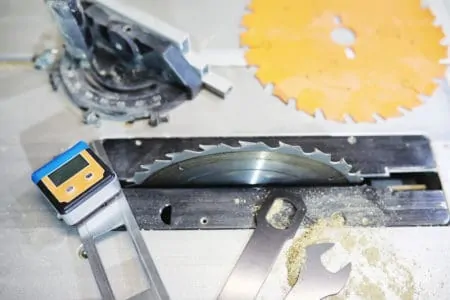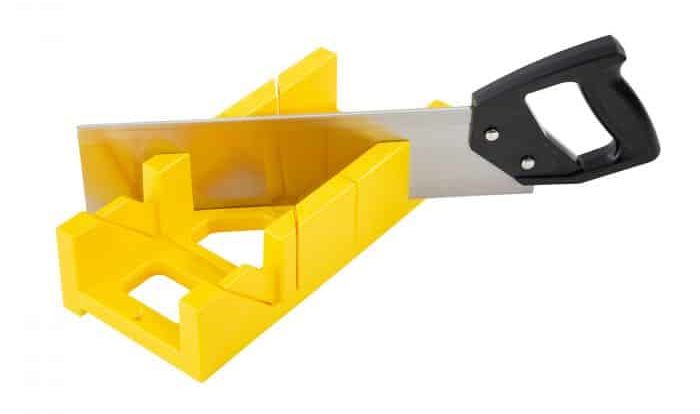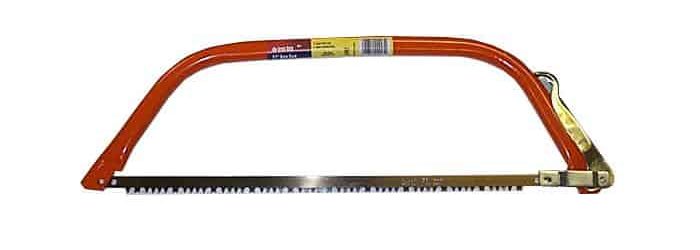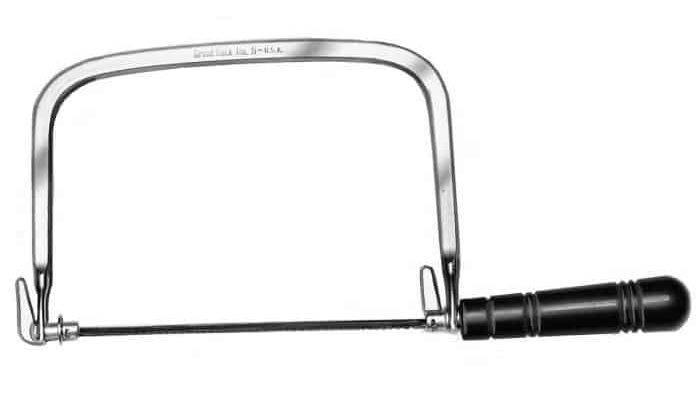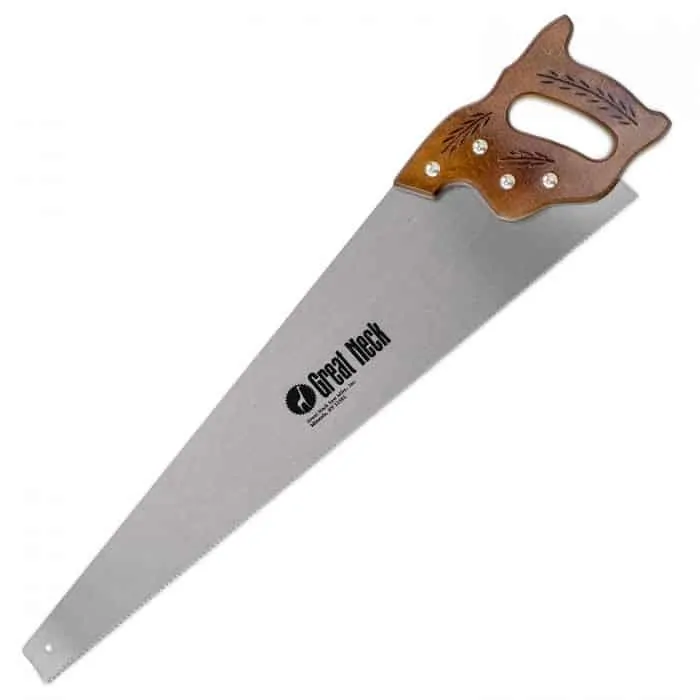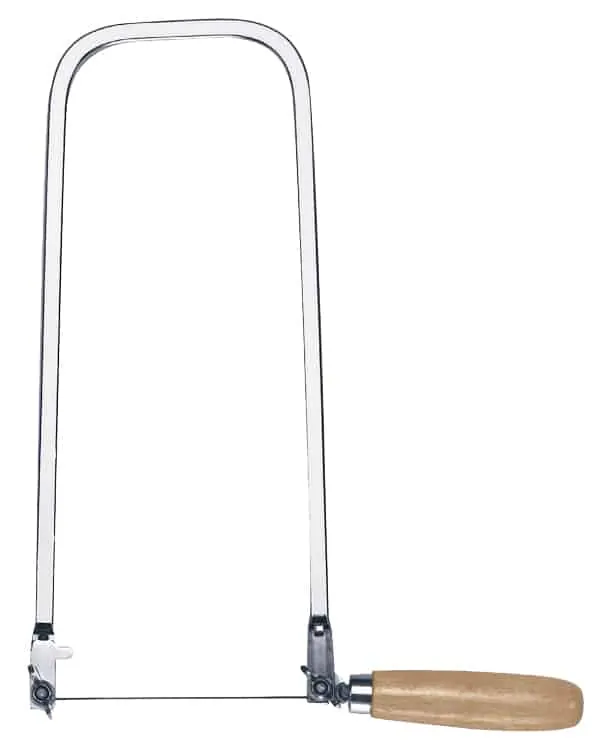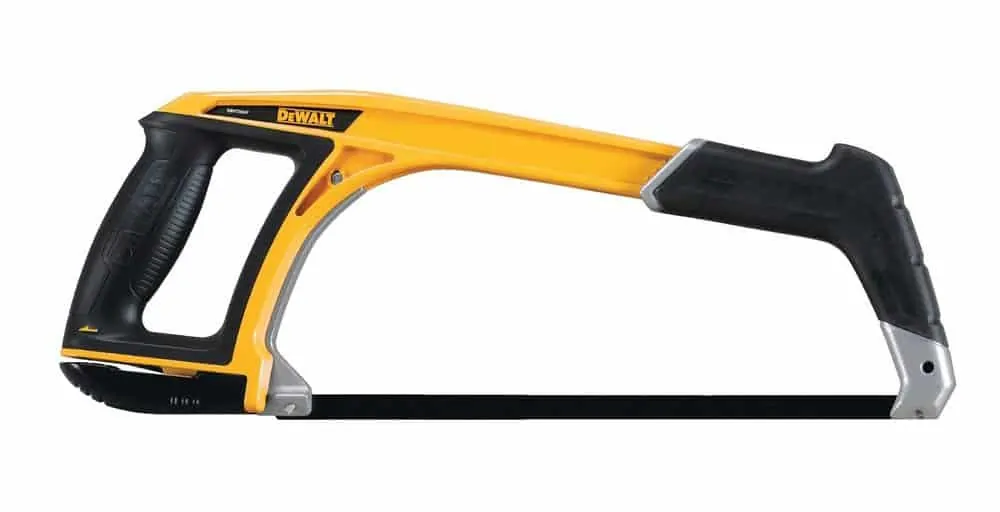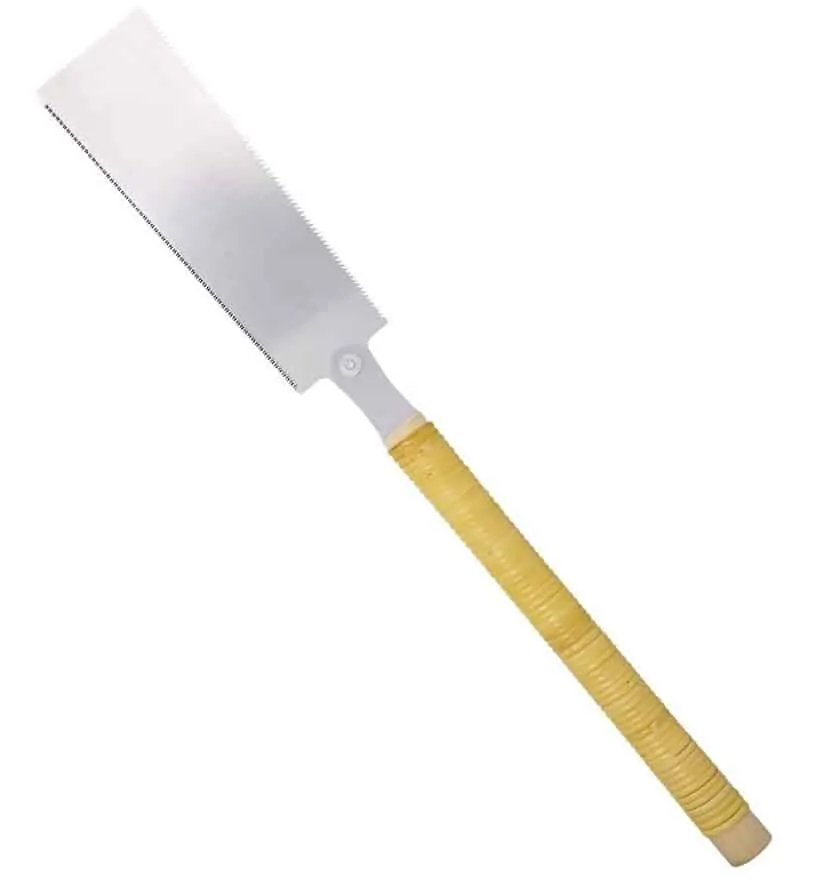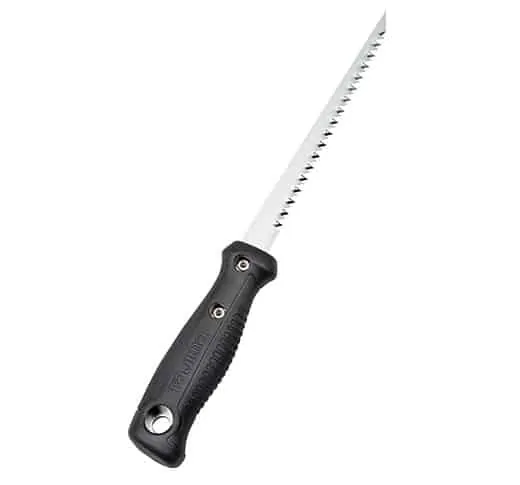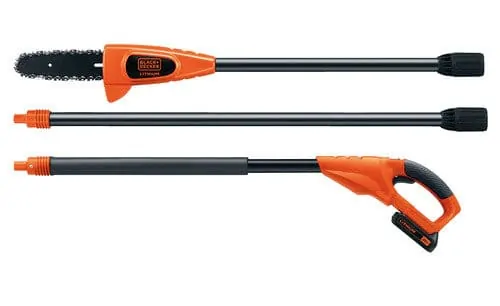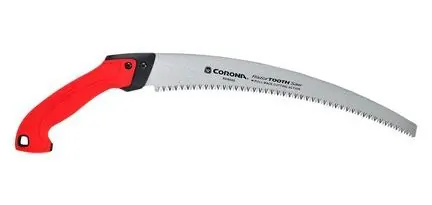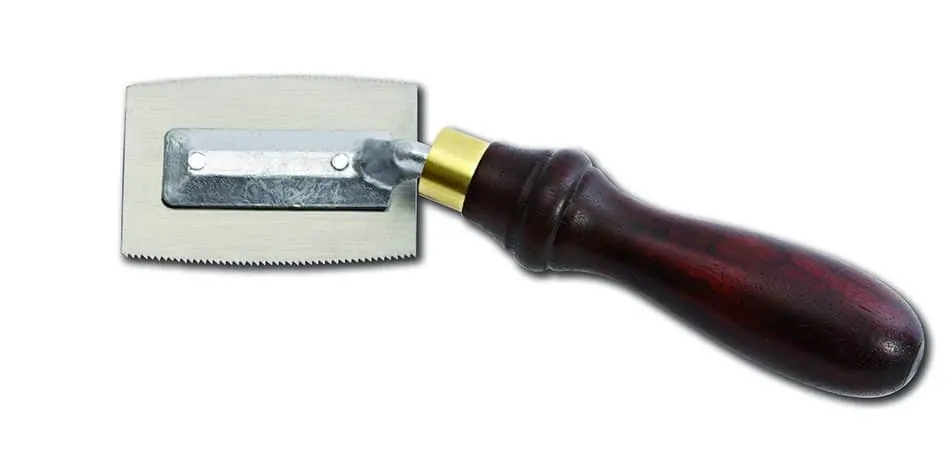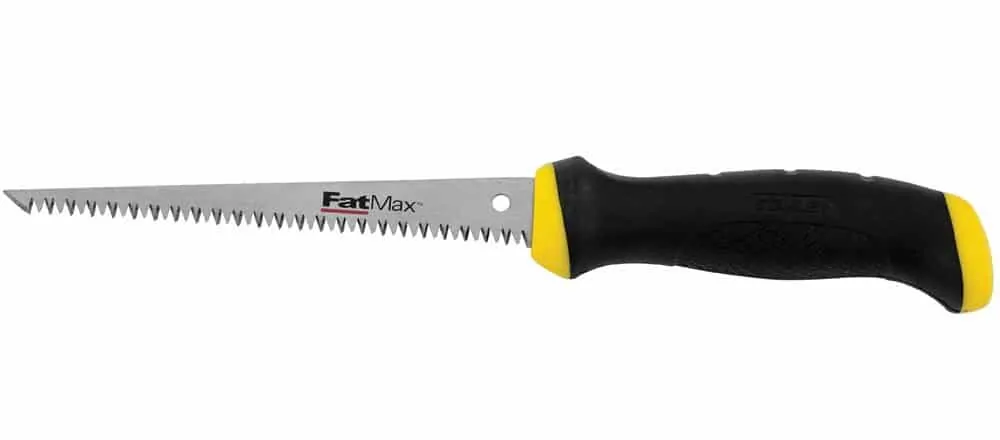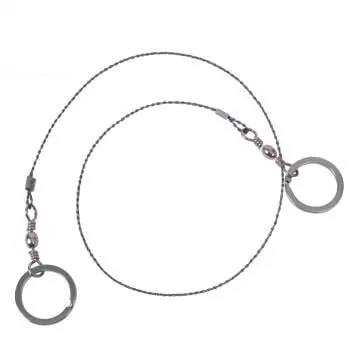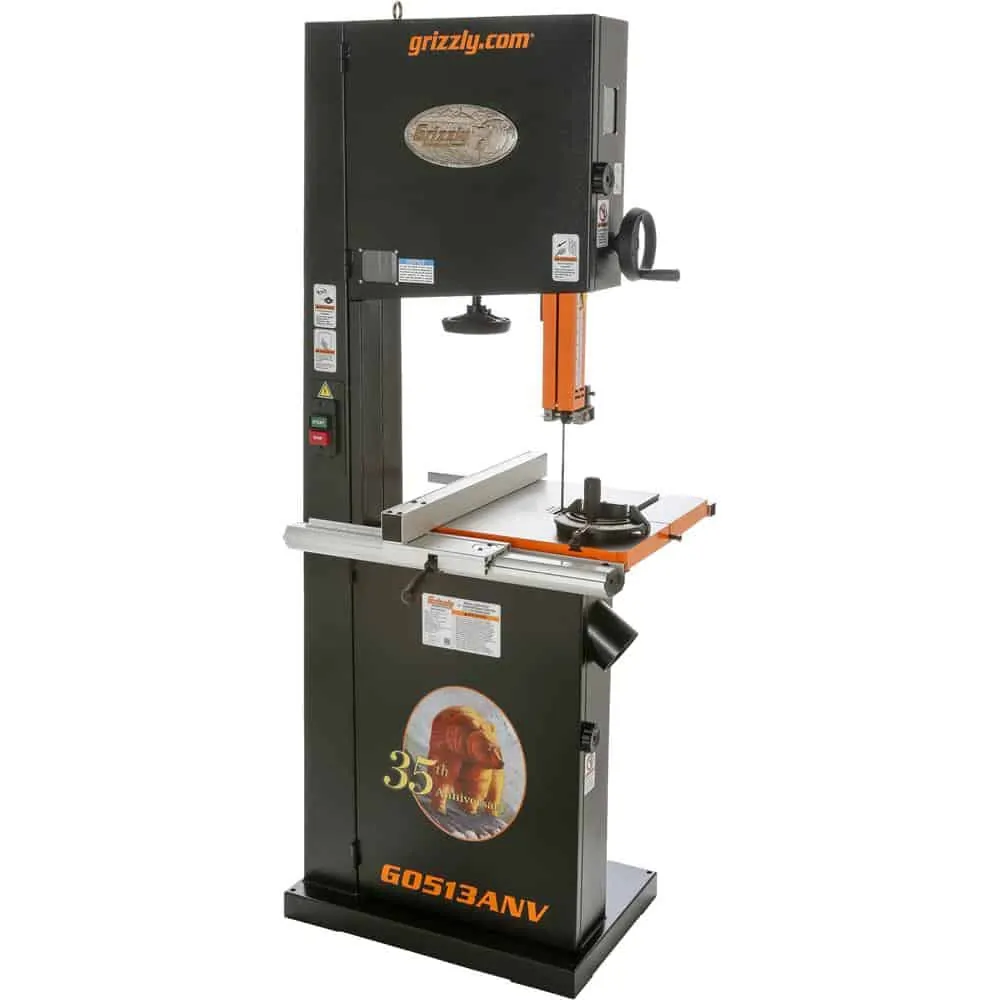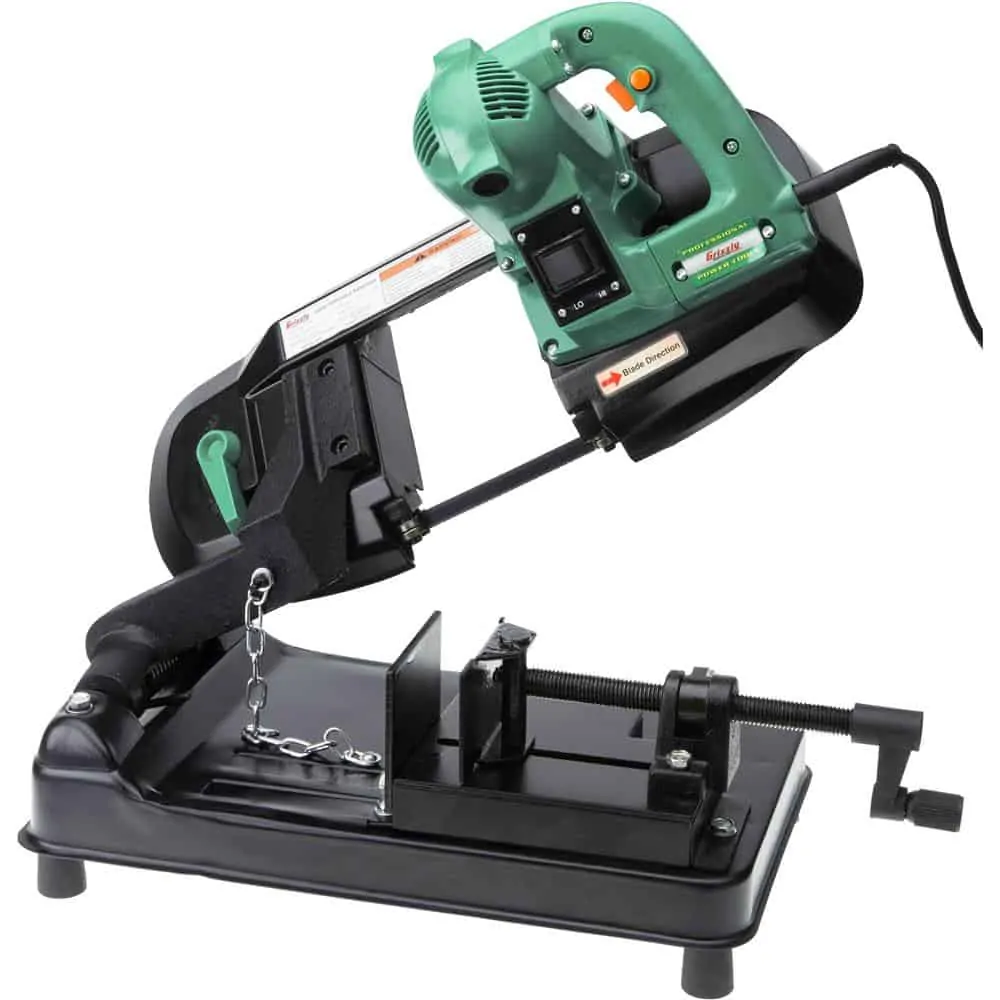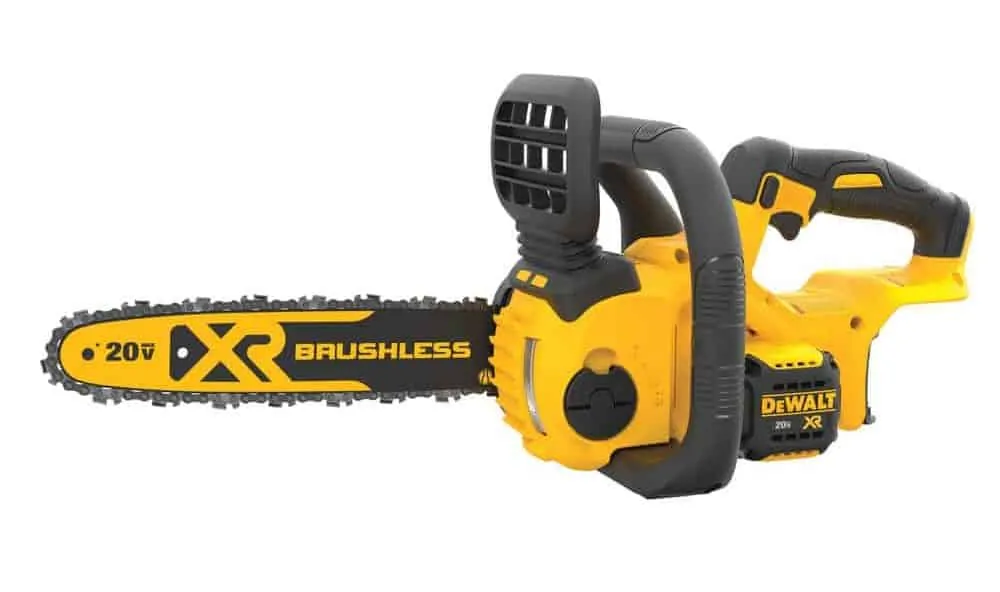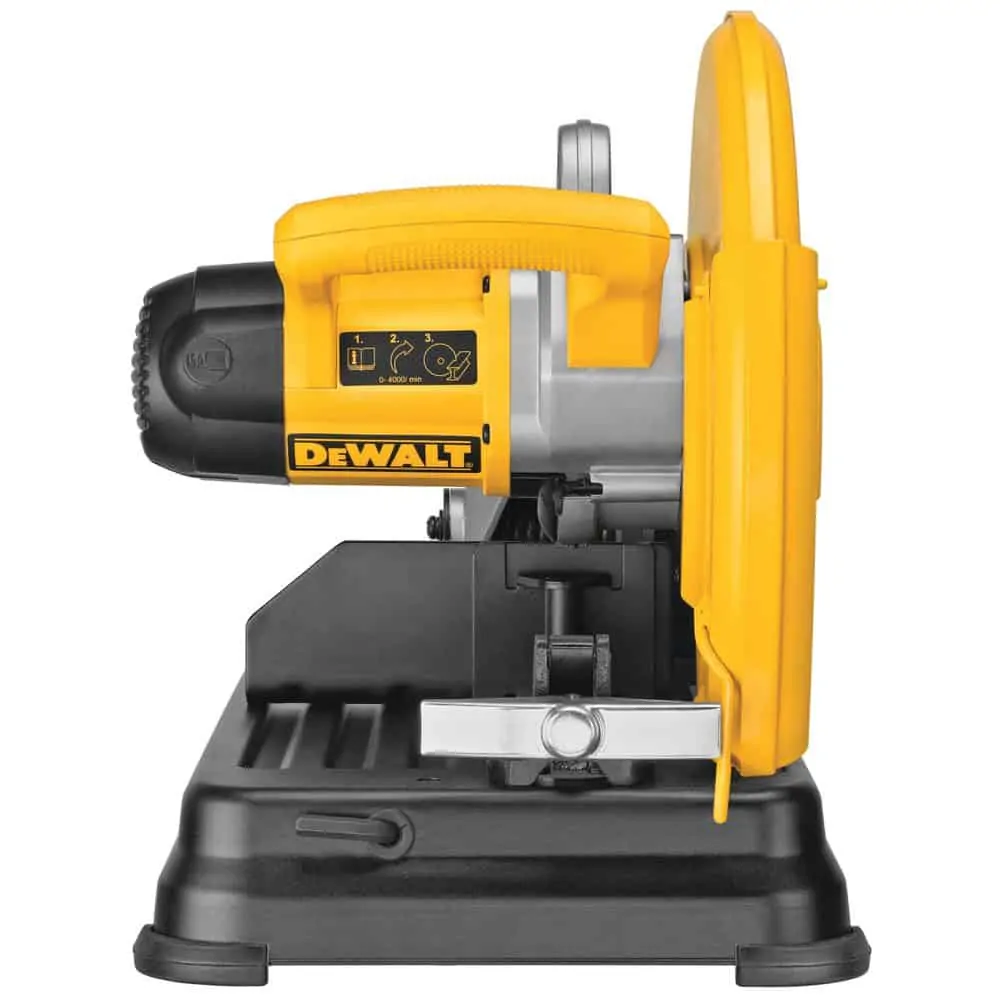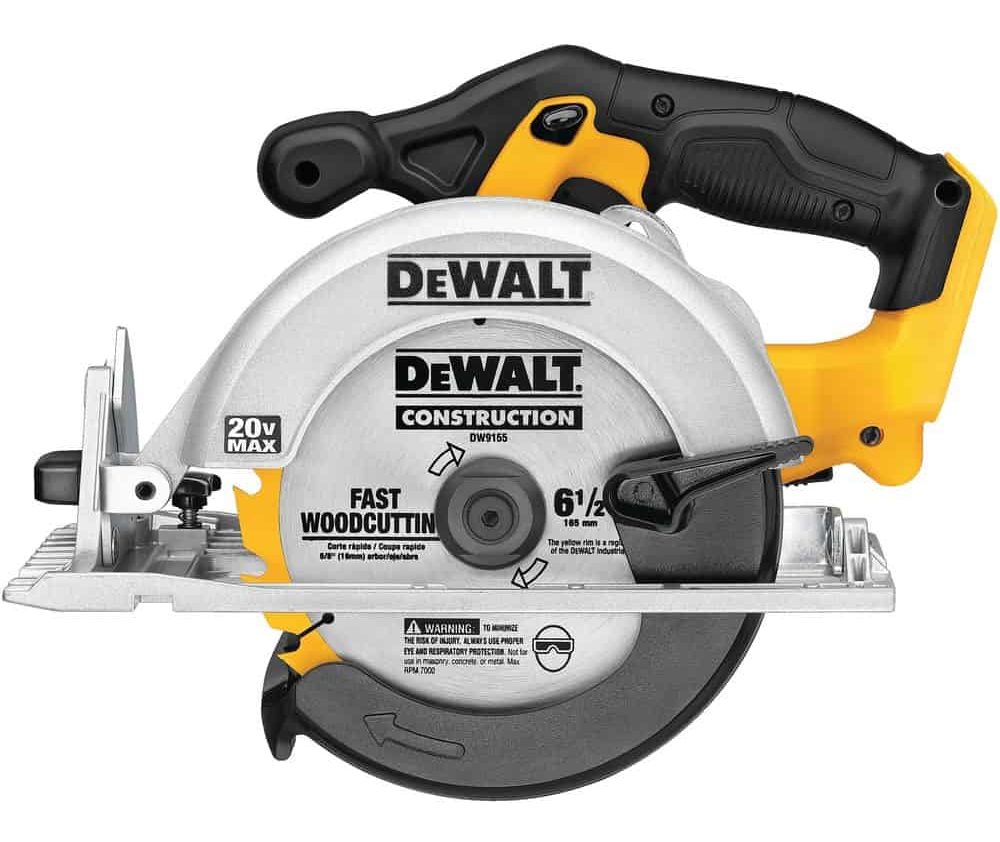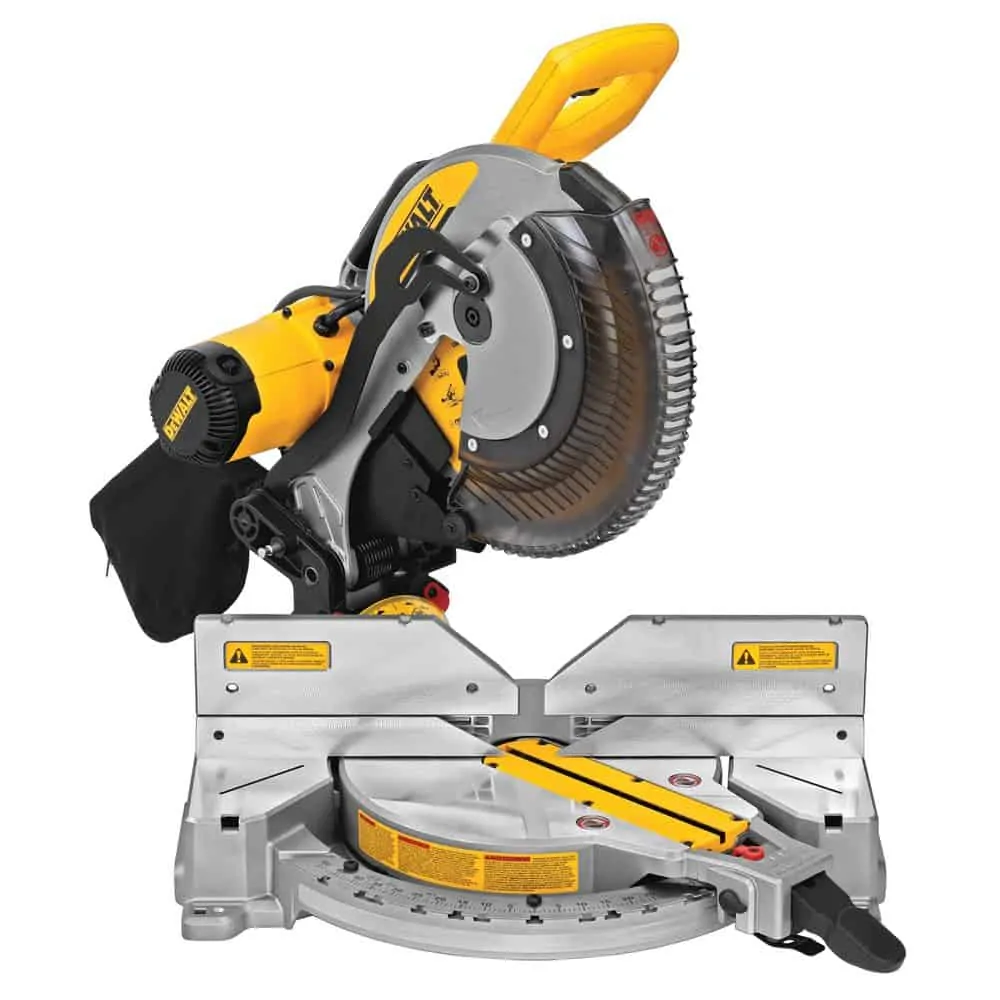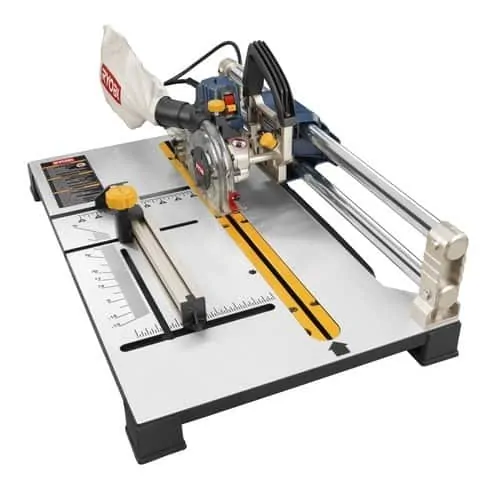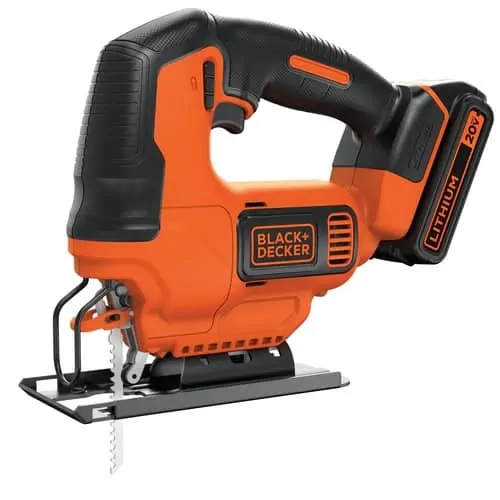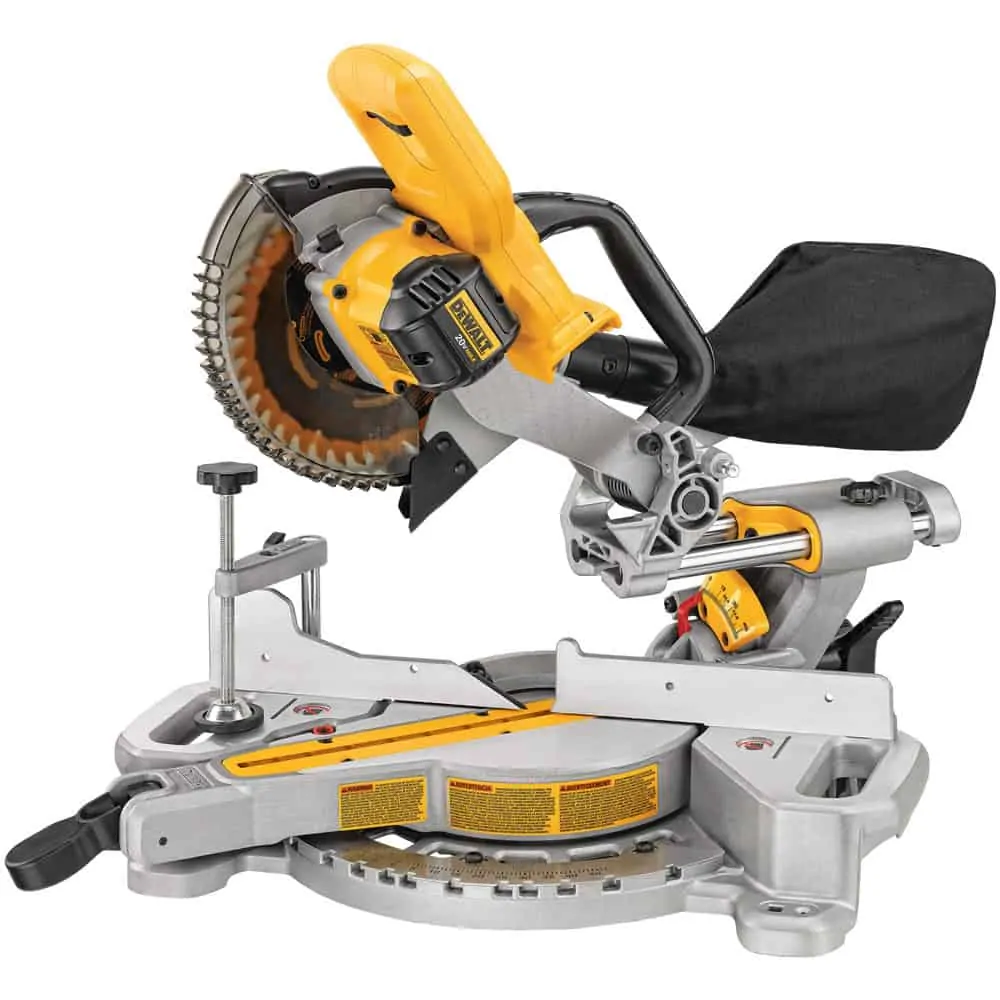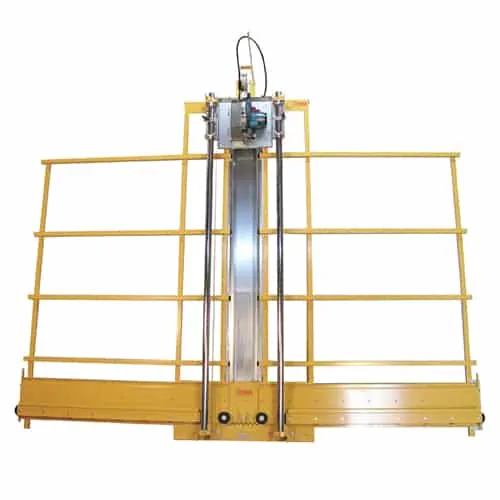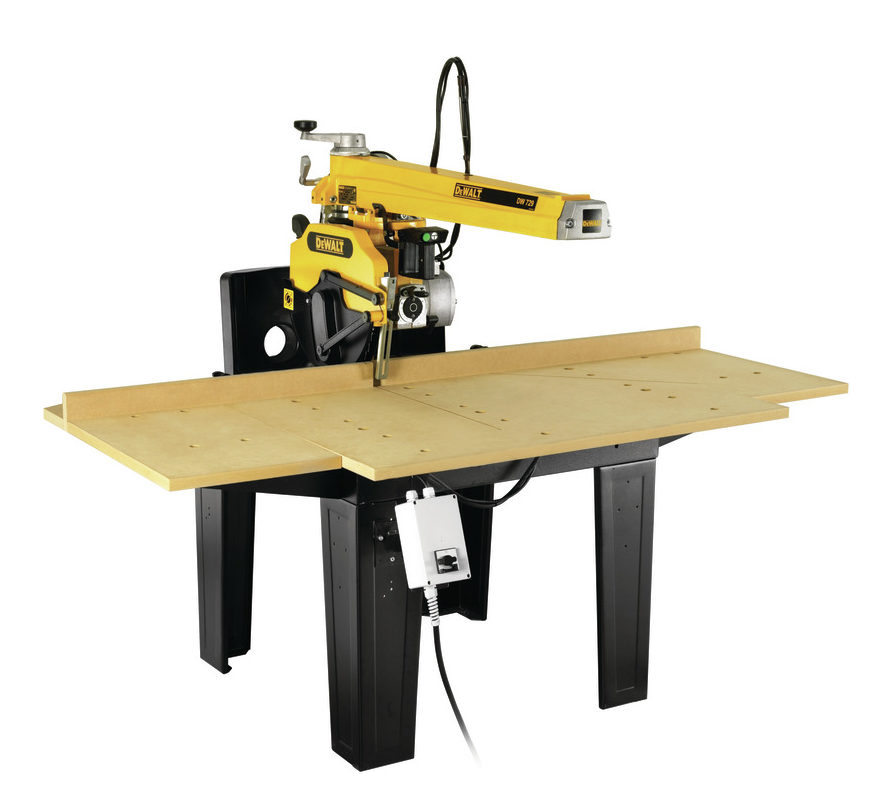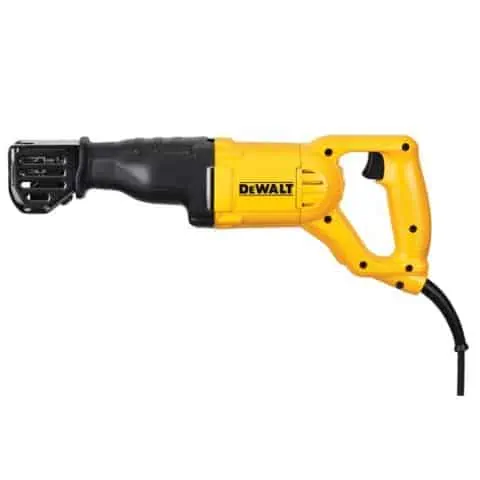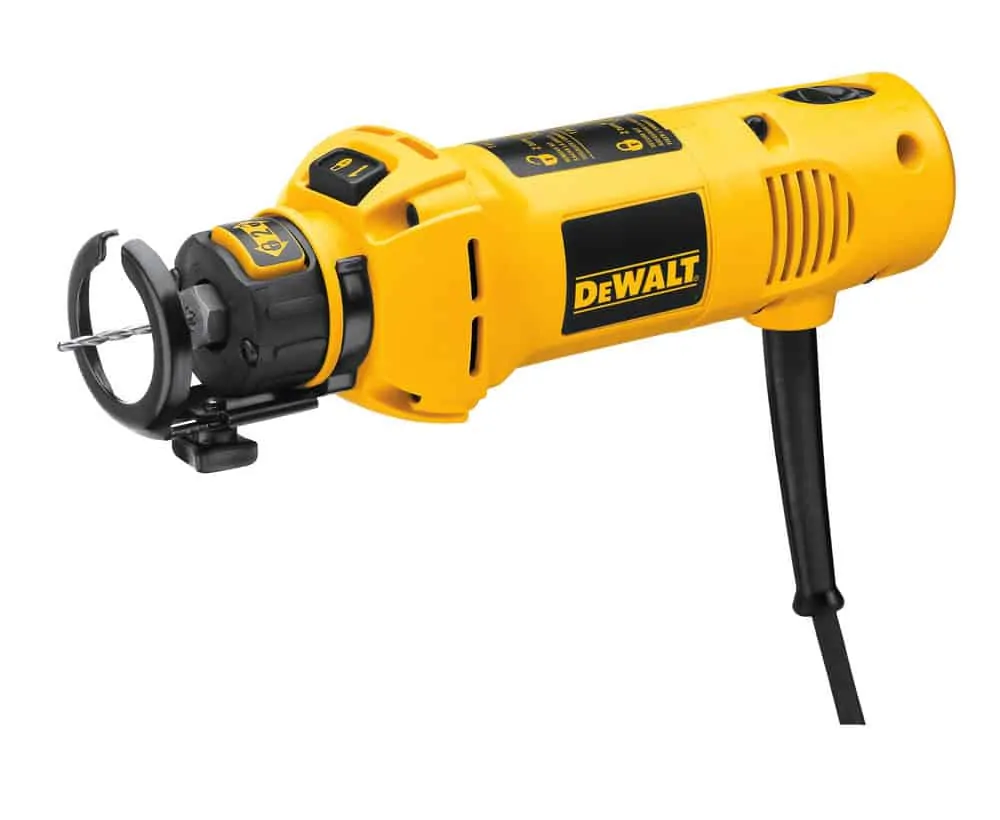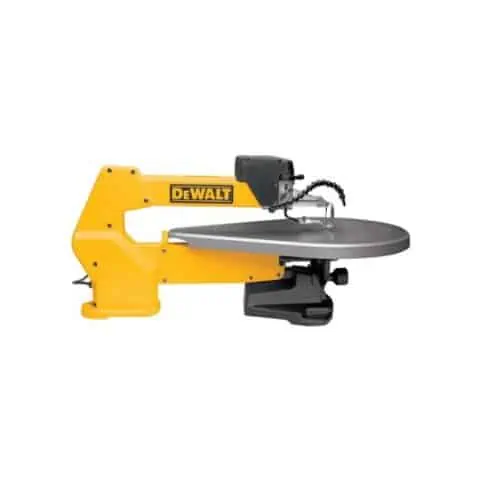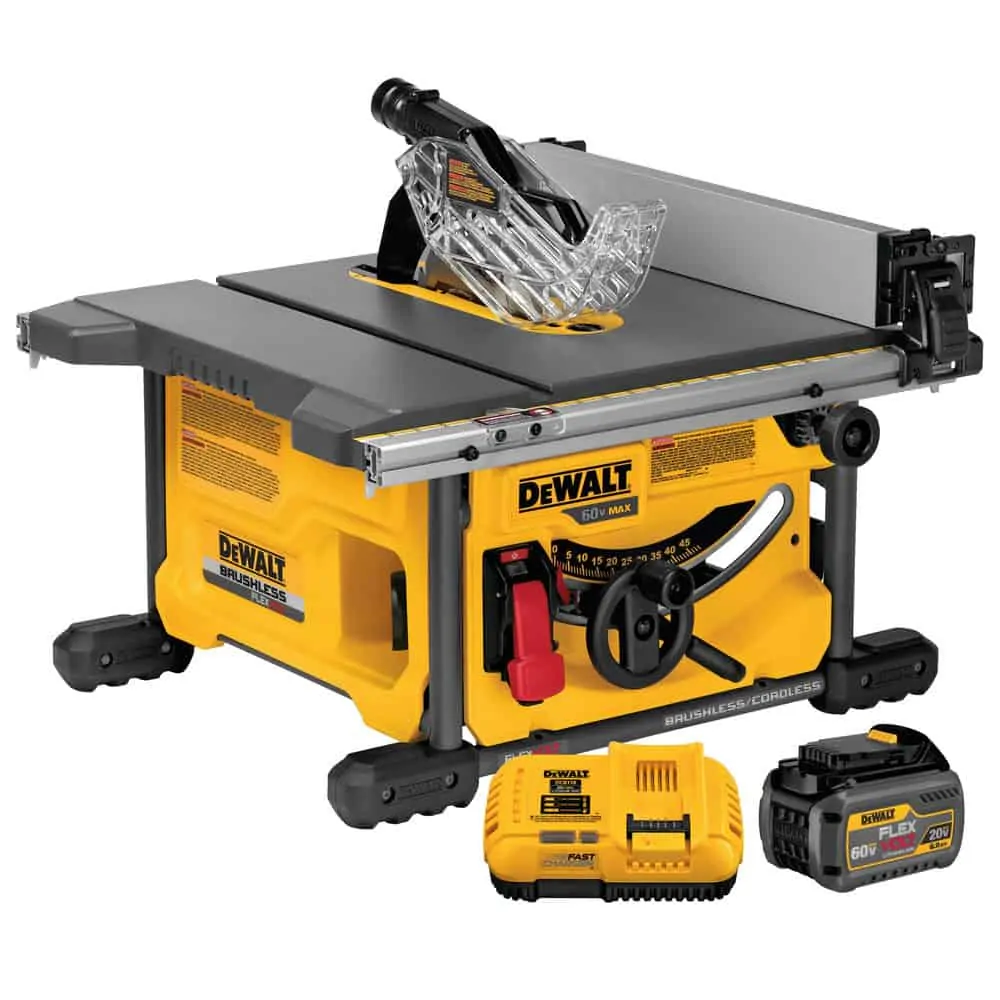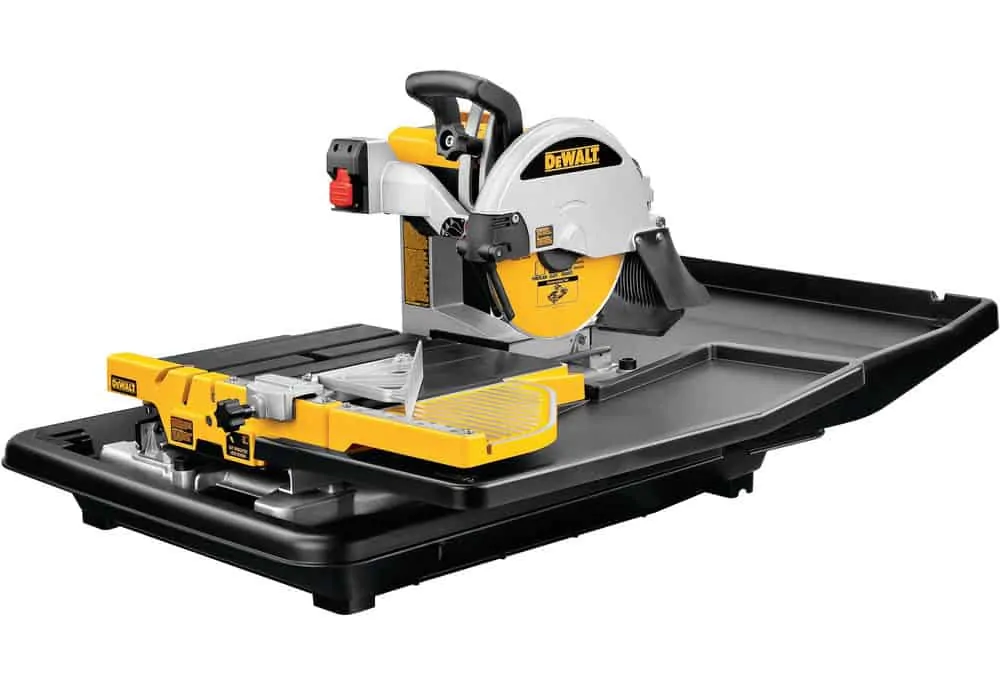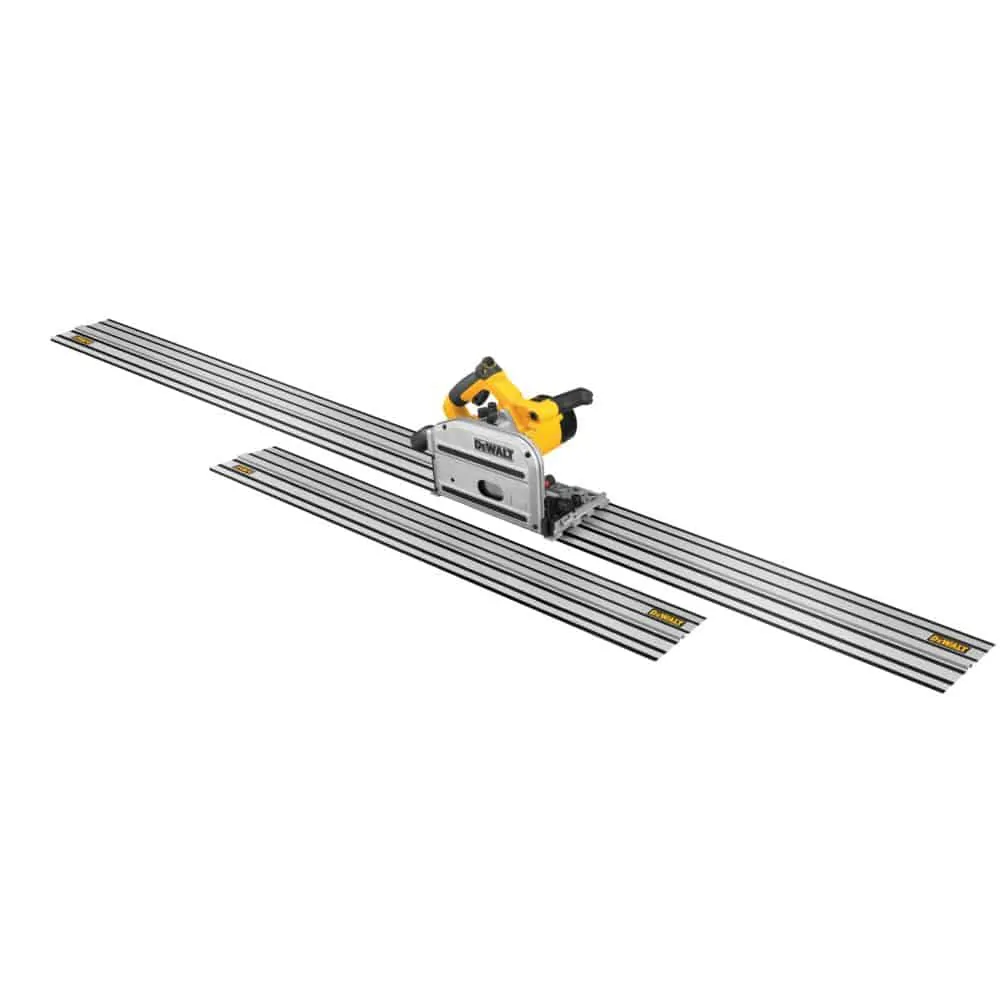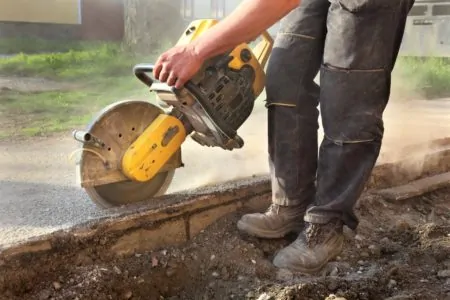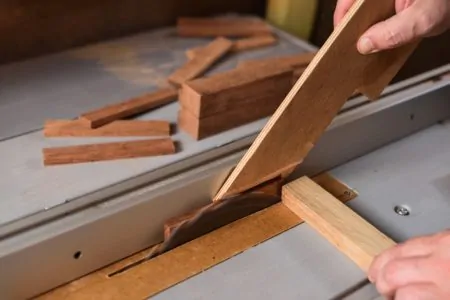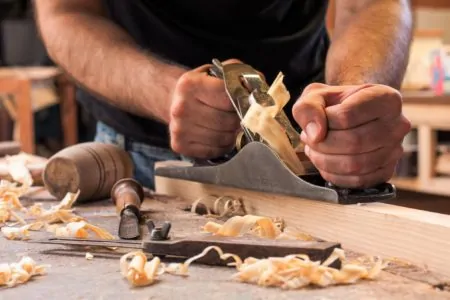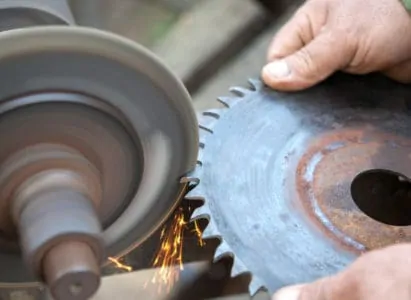Saws have been used for thousands of years and remain one of the most important tools for any builder, carpenter, or DIYer. Today, there are dozens of saw types to choose from, each designed to be suitable for different tasks.
Choosing the right saw for a specific job will make it much easier. On the other hand, trying to use an unsuitable saw can make it far more difficult. Whatever you need to do, you should be able to find a saw that is ideal for the task.
With so many saws to choose from, you might need some guidance to find the one you need. To help you, we have written an extensive list of 32 types of saws, including which jobs they are used for and some of their advantages and drawbacks.
Key Takeaways
- There are many types of saws, each designed for specific tasks.
- Some common saws include back saws, bow saws, coping saws, and crosscut saws.
- Choosing the right saw for a job makes it easier and more efficient.
- Most saws can be categorized as hand, portable, or power saws.
32 Types of Saws Explained
1. Back Saw
Back saws are typically used for miter cuts. They have a short blade and a reinforced spine, hence the name. They are sometimes known as miter saws or tenon saws, depending on where you live.
Back saws are a favorite among cabinet and furniture makers because their wider brace provides better control for precision cutting. Further precision comes from the thin, fine-toothed blade. Despite having a thin blade, the thick spine ensures back saws are still easy to control.
Pros
- Great for fine cuts
- Good control thanks to the wider brace
- Cuts miters
Cons
- The wide spine means the blade cannot pass through a cut
Product Specs
| Type | Hand, Portable |
| Difficulty | Intermediate, Advanced |
| Best for Cutting | Wood |
| Price | $ |
2. Bow Saw
Bow saws are designed primarily for outdoor tasks. Their large teeth make short work of trees and logs. Their shape means the teeth remove material when you push and pull, so they are ideal for cutting thick limbs off trees.
They are very effective at cutting but they are not precision tools. Bone saws should be used for cutting through thick wood but they are unsuitable for carpentry projects if you want a smooth finish.
Pros
- Cuts in both directions
- Ideal for outdoor tasks
- Will cut wet wood
- Makes short work of thick branches
Cons
- Not a precision tool
- Only has one purpose
Product Specs
| Type | Hand, Portable |
| Difficulty | Beginner |
| Best for Cutting | Logs, Pruning trees |
| Price | $$ |
3. Coping Saw
A coping saw makes precision cuts. It can be used for intricate tasks such as trim work, scrollwork, and anything else that requires a clean, precise cut.
The blade is thin and the body of the saw is arched, allowing you to cut through wider materials. The blade can also rotate to provide better control when cutting in awkward locations.
Coping saws are favorites of carpenters and can also be found in the tool kits of plumbers and toymakers. They will cut wood, plastic, composite materials, and even some metals, depending on which blade you use.
Pros
- Ideal for scroll and trim work
- Rotating blade
- Great for precise detail cutting
Cons
- Specialist saw
- Not suitable for general cutting
- Only suitable for small tasks
Product Specs
| Type | Hand, Portable |
| Difficulty | Advanced |
| Best for Cutting | Wood, Plastic, Composites, Metal |
| Price | $ |
4. Crosscut Saw
Like bow saws, the crosscut saw is best suited to the outdoors. It is a wide-toothed saw that cuts effectively in both directions across the wood’s grain. It is the go-to choice for cutting lumber, especially the larger two-handled version.
If you choose a one-person model, it is still an ideal tool for pruning, trimming, and tidying up branches. These saws can be very useful when you are camping in the wild.
Pros
- Cuts in both directions
- Makes short work of trees and branches
- Available as a one or two-person saw
- Great for camping
Cons
- Only useful for outdoor work
- Lacks precision
Product Specs
| Type | Hand, Portable |
| Difficulty | Beginner, Intermediate |
| Best for Cutting | Logs, Pruning trees |
| Price | $$ |
5. Fret Saw
The fret saw resembles a coping saw and is from the same family. It has a deeper arched frame, meaning it is ideal for cutting through wider objects.
Fret saws are used to make intricate cuts. However, unlike coping saws, the blade is fixed in place and can’t be rotated, so it can be difficult to achieve the same level of precision when making awkward cuts.
Pros
- Best for fine detail cutting
- Deep-arched frame for thicker material
Cons
- Only useful for smaller tasks
- Unsuitable for general sawing
- The blade can’t be rotated, unlike a coping saw
Product Specs
| Type | Hand, Portable |
| Difficulty | Advanced |
| Best for Cutting | Wood, Plastic, Composites |
| Price | $ |
6. Hacksaw
Hacksaws are very versatile cutting tools. They can cut through metal pipes, wood, plastic, and various other materials. Whatever material you are cutting, you should be able to find a blade that is suitable for the job.
These saws are very effective due to the high number of teeth on their blades. There are typically between 18 and 32 teeth per inch, which makes them among the densest saw types.
Pros
- Versatile
- High tooth density on the blade
- Cuts metal, wood, and plastic
Cons
- Not a precision saw
- Unsuitable for large-scale jobs
Product Specs
| Type | Hand, Portable |
| Difficulty | Beginner |
| Best for Cutting | Wood, Composites, Plastic, Metal |
| Price | $ |
7. Japanese Saw
The Japanese are renowned for creating some of the finest blades in the world, and their saws are no exception. These saws consist of a long thin handle and a protruding cutting blade. They can reach places that other saws can’t, making them more accurate than a back saw.
These saws can cut soft and hardwood and are available in three varieties; Dozuki, Kataba, and Ryoba.
Pros
- Long handle for extra reach
- Precise cutting
- Available in three styles
Cons
- Specialist cutting tool
- Not readily available outside Japan
Product Specs
| Type | Hand, Portable |
| Difficulty | Beginner |
| Best for Cutting | Hardwood, Softwood |
| Price | $ |
8. Keyhole Saw
If you need to cut and fit drywall, a keyhole saw is an ideal tool. It has a rounded handle and a long, tapered blade that is perfect for cutting small circles and patterns. This makes it invaluable when cutting drywall to fit into specific openings or removing sections to accommodate pipework.
You can often use power tools for these tasks, but this won’t always be the case. Using a keyhole saw is much safer when working near power cables or pipework. You can also use your keyhole saw for small, quick tasks and avoid having to set up a power saw.
Pros
- Makes small holes and cuts
- Perfect for drywall
- Useful for cutting unusual shapes
Cons
- Only suitable for small detail work.
- Specialist tool
Product Specs
| Type | Hand, Portable |
| Difficulty | Intermediate |
| Best for Cutting | Wood, Composite, Drywall, Wallboards |
| Price | $ |
9. Pole Saw
A pole saw, or pole runner as they are sometimes known, is the best tool for pruning branches that are otherwise too high to reach. It has a long, extendable pole with an 8-inch cutting blade. The pole typically extends to 16 feet, but longer models are also available.
These saws are a gardener’s dream as they allow you to cut high branches without needing to climb a step ladder, making them far safer and more convenient.
Pros
- Extended reach
- Can transform the way you garden
- Makes short work of hard-to-reach branches.
Cons
- Only suitable for outdoor work
- Not a precision tool
Product Specs
| Type | Hand, Portable |
| Difficulty | Beginner |
| Best for Cutting | Logs, Trees |
| Price | $$$ |
10. Pruning Saw
Pruning saws are a gardener’s best friend and are often used to remove small branches from trees.
A pruning saw has a curved blade, usually 13 to 15 inches long. The handle is similar to a pistol grip, and the teeth cut both ways when you push and pull. This speeds up the cutting process and removes more material.
As a pruning saw only has a short reach, it is most suitable for lower branches or ones that you can safely reach from a stepladder.
Pros
- Cuts both ways
- Ideal for low branches and small logs
- Great for general garden tasks
Cons
- Can’t reach high branches
- Specifically for use in the garden
Product Specs
| Type | Hand, Portable |
| Difficulty | Beginner |
| Best for Cutting | Trees, Branches |
| Price | $ |
11. Rip Cut Saw
Rip-cut saws are a staple of any carpenter’s tool bag. They are available in various sizes and, as they can cut with precision, they are ideal for framing work. The blade has relatively few teeth per inch (usually around five). However, they are very sharp and designed to remove as much material as possible with each movement.
These saws are often simply referred to as “hand saws”. This is likely the first design you will think of when someone mentions a saw.
Pros
- Extremely sharp teeth
- Designed to remove as much material as possible
- Classic shape
- Excellent for cutting frames
Cons
- Low tooth count on the blade
- Generic saw
Product Specs
| Type | Hand, Portable |
| Difficulty | Beginner, Intermediate |
| Best for Cutting | Wood |
| Price | $$ |
12. Veneer Saw
The veneer saw is one of the few saw types that cannot be used for other tasks. It is used exclusively for precision veneer work. It has a rounded handle with a short, double-edged blade. Each cutting edge has about 13 teeth per inch.
Highly skilled woodworkers’ tool kits will often include a veneer saw, especially if they are cabinet makers. However, you are unlikely to need one at any point during general DIY work.
Pros
- 13 teeth per inch
- Double-edged blade
- Precision veneer cuts
Cons
- Unsuitable for other tasks
Product Specs
| Type | Hand, Portable |
| Difficulty | Advanced |
| Best for Cutting | Veneer |
| Price | $ |
13. Wallboard Saw
A wallboard saw strongly resembles a keyhole saw but there are some subtle differences. Wallboard saws have shorter, wider blades and fewer teeth per inch. As the name suggests, they are used for cutting holes in wallboards. They are often used to create starter holes for power saws.
These saws are available in single-blade and double-edged varieties.
Pros
- Great for making starter holes in wallboards
- Available in double and single-blade models
Cons
- Not suitable for general cutting
- Less versatile than a keyhole saw
Product Specs
| Type | Hand, Portable |
| Difficulty | Intermediate, Advanced |
| Best for Cutting | Wallboard, Drywall |
| Price | $ |
14. Wire Saw
This unique type of saw is a length of industrial-strength wire between two hoop handles. It functions similarly to a band saw and is used for tasks that require precision cutting.
As the wire is very strong, it can be used to cut hard materials such as rocks into neat blocks.
Pros
- Cuts masonry
- Precision cutting
- Industrial-strength wire
Cons
- Only suitable for trained users
Product Specs
| Type | Hand, Portable |
| Difficulty | Intermediate, Advanced |
| Best for Cutting | Masonry, Wood |
| Price | $ |
15. Band Saw (Stationary)
A stationary band saw is a common sight in the workshops of woodworkers. It is an upright cabinet-style saw, with pulleys above and below that move a fine blade up and down. It is ideal for cutting intricate shapes and curves, and it will cut through most materials.
This includes cutting tubes, pipes, and PVC. Band saws are excellent for making precision cuts as you can move the material around the saw, which is easier than the conventional method of moving the saw back and forth.
One common use of band saws is resawing, which is the process of slicing lumber into thinner pieces.
Pros
- Ideal for resawing
- Can cut a wide range of materials
- Will cut intricate shapes
Cons
- Stationary
- Among the most expensive saw types
Product Specs
| Type | Power, Fixed |
| Difficulty | Intermediate, Advanced |
| Best for Cutting | Wood, Metal, Tubing, Plastic, Pipes |
| Price | $$$ |
16. Band Saw (Portable)
A portable band saw is ideal for working on-site, which is why contractors and carpenters often use them on projects. They cut in the same way as a stationary band saw, but on a smaller scale due to their reduced size.
This tool can also cut pipes and tubes of various materials, making it a favorite of plumbers and metalworkers. Portable band saws are available in vertical or horizontal designs.
Pros
- Portable
- Suitable for on-site work
- Cuts pipes, tubes, metal, and wood
- Ideal for professional contractors
Cons
- Can only cut smaller objects
Product Specs
| Type | Power, Portable |
| Difficulty | Intermediate, Advanced |
| Best for Cutting | Wood, Metal, Tubing, Pipes, Plastic |
| Price | $$$ |
17. Chainsaw
If you want a powerful cutting tool, a chainsaw is tough to beat. It is the trusty tool of every forestry worker and many homeowners. It functions by spinning a chain around a protruding arm at great speed. The chain has multiple teeth designed to tear away parts of the material you cut, so they are not very precise.
The chainsaw is part of the band saw family and is a must-have tool for anyone living in a heavily wooded area. They are available in both petrol and electric varieties, although petrol chainsaws are generally more powerful.
Pros
- Powerful cutting action
- Can cut through tough materials
- Rips through thick logs
- Essential tool for people living in woodland
Cons
- Not a precision tool
- Requires skill to use
- Dangerous if used improperly
Product Specs
| Type | Power, Portable |
| Difficulty | Intermediate, Advanced |
| Best for Cutting | Logs, Trees |
| Price | $$$ |
18. Chop Saw
A chop saw is also known as an abrasive saw. It has a toothless spinning disc mounted on a support arm. It is the largest of the circular saw family and is used to cut metal and masonry, depending on which version you have.
Masonry chop saws typically have a waterline connection to prevent dust from spreading when cutting concrete. They might also be called concrete saws or cut-off saws.
Pros
- Cuts metal and masonry
- Interchangeable blades
- Waterline connection to reduce dust
Cons
- Not suitable for general cutting
- Replacement blades are expensive
Product Specs
| Type | Power, Portable |
| Difficulty | Intermediate, Advanced |
| Best for Cutting | Masonry, Metal, Wood |
| Price | $$$ |
19. Circular Saw
Unlike chop saws, circular saws have a spinning toothed blade, usually between 7-¼ and 9 inches in diameter. They are significantly smaller than chop saws.
Circular saws are the most common type of power saw. Their interchangeable blades mean they can be used to cut various materials, including wood, metal, plastic, and masonry.
You might also see this saw type referred to as a buzz saw. Mini or compact models are also available.
Pros
- Can cut many different materials
- Interchangeable saw blades
- Efficient cutting action
- Relatively lightweight and portable
Cons
- Only cuts in one direction
- Is only suitable for straight cuts
Product Specs
| Type | Power, Portable |
| Difficulty | Intermediate, Advanced |
| Best for Cutting | Wood, Metal, Plastic, Masonry |
| Price | $$$ |
20. Compound Miter Saw
Compound miter saws are very versatile cutting tools. They can make various precise cuts, such as bevel, compound, straight, and miter cuts. This makes them the ideal choice for scrollwork, trims, crown moldings, window frames, and door frames. This versatility makes them one of the most popular tools among carpenters.
A compound miter saw is portable, so it is suitable for working on-site. It can also be mounted on a stand or table to make it a permanent fixture in your woodshop.
Pros
- Versatile
- Great for scrollwork, moldings, and door or window frames
- Portable
- Can be mounted on a stand
Cons
- Only suitable for smaller materials
- It can’t make rip-cuts
Product Specs
| Type | Power, Portable |
| Difficulty | Advanced |
| Best for Cutting | Wood, Plastic, Composites |
| Price | $$$ |
21. Flooring Saw
A flooring saw is another highly specialized tool, designed to cut engineered and hardwood flooring. It is portable, so you will be able to complete tasks quickly on-site. It replaces the miter saw, the jigsaw (which is less precise), and circular saw as a means to cut flooring.
A flooring saw only has one purpose, so you are unlikely to need one unless you are a professional builder or experienced DIYer.
Pros
- Suitable for hardwood and engineered flooring
- Can resaw floorboards
- Portable
Cons
- Only designed for one task
- Other tools are more versatile and can do the same job
Product Specs
| Type | Power, Portable |
| Difficulty | Intermediate, Advanced |
| Best for Cutting | Engineered, Wooden flooring |
| Price | $$$ |
22. Jigsaw
A jigsaw is a power tool designed for cutting curves and other intricate lines that aren’t straight. It has a fine, narrow blade that cuts by rapidly moving up and down.
Jigsaws are compact and versatile, making them a staple in the tool kits of DIY enthusiasts and professionals alike.
They are available with power cords or cordless with rechargeable lithium battery packs. Jigsaws can be very useful for anyone that needs to cut boards into unusual shapes, as they are simple and safe to use.
Pros
- User-friendly
- Excellent for cutting unusual angles and curves
- Portable
- Versatile
Cons
- Difficult to cut straight lines
- Makes rough cuts
Product Specs
| Type | Power, Portable |
| Difficulty | Beginner, Intermediate |
| Best for Cutting | Wood, Plastic, Composite |
| Price | $$ |
23. Miter Saw
Miter saws are portable, sit on a flat surface, and are excellent for making precise miter and bevel cuts. The saw has a circular blade mounted on a pivoting arm that allows you to set the desired angle.
A miter saw looks similar to a chop saw but a miter saw can be rotated, whereas a chop saw cuts in straight lines.
Miters saws are the go-to tool for creating crown moldings, picture frames, and door and window frames. If you require an accurate angled cut, a miter saw will provide the best results.
Pros
- Portable
- Makes bevel and miter cuts
- Can be rotated to a specific angle
- Ideal for crown and base moldings, as well as frames
Cons
- Restricts the size of objects you can cut
Product Specs
| Type | Power, Portable |
| Difficulty | Intermediate, Advanced |
| Best for Cutting | Wood, Plastic, Composite |
| Price | $$$ |
24. Oscillating Saw
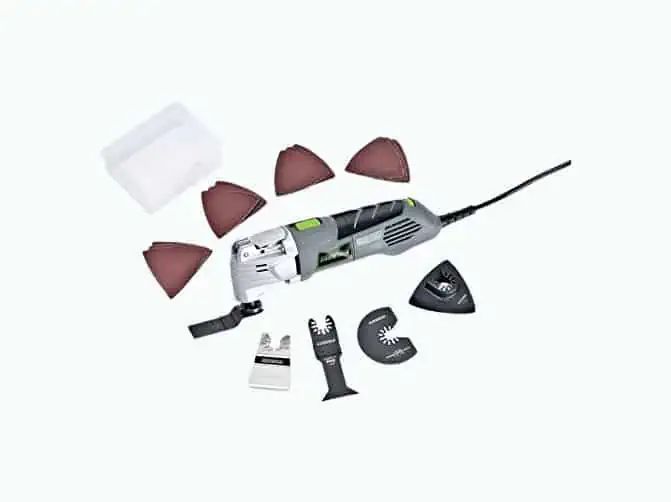
Oscillating saws are sometimes referred to as multi-tools, given how many attachments you can fit onto the base.
This saw resembles a grinder because the handle is short and thick. You can change the blade based on your current task, making an oscillating saw one of the most versatile power tools available.
It grinds, scrapes, files, sands, and gouges out filler and decorators caulk.
Pros
- Interchangeable blades
- Adaptable
- Easy to use
Cons
- Can be difficult to control
- Less accurate than a circular saw
- Not as neat as a miter saw
Product Specs
| Type | Power, Portable |
| Difficulty | Beginner |
| Best for Cutting | Wood, Masonry, Plastic, Drywall, Wallboard |
| Price | $$ |
25. Panel Saw
The panel saw is closely related to the table saw. Both vertical and horizontal versions are available and can be used with a sliding feed or by manually maneuvering the material toward the blade. They are ideal for larger stock, and for cutting sheet panels.
Panel saws are a favorite tool of cabinet makers and signmakers.
Pros
- Excellent for cutting substantial material
- Easy to use
- Cuts sheet panels
- Ideal for cabinet makers
Cons
- Only cuts in one direction
- Can’t make angular cuts
Product Specs
| Type | Power, Portable, Fixed |
| Difficulty | Beginner, Intermediate |
| Best for Cutting | Wood, Sheet materials, Plastic, Composites |
| Price | $$$ |
26. Radial Arm Saw
Radial arm saws resemble miter or chop saws. However, the motor and blade are suspended from an arm that extends out over the surface of the material you are cutting. The arm gives the saw a greater cutting surface but you can still cut accurate miters, compound cuts, and many more.
The blades are interchangeable, depending on which material you are cutting.
Pros
- Greater saw control
- Numerous angle and position options
- The saw can be maneuvered over the work surface
Cons
- Dangerous without training
- The blade has a tendency to “crawl” toward the user
- Less accurate than a miter saw
Product Specs
| Type | Power, Portable |
| Difficulty | Intermediate, Advanced |
| Best for Cutting | Wood, Composites, Plastic |
| Price | $$$ |
27. Reciprocating Saws
A reciprocating saw resembles a more powerful and maneuverable version of a jigsaw. It uses the same up-and-down blade action as a jigsaw. However, unlike a jigsaw, which has a flat base to glide across the surface of the material, a reciprocating saw is used freehand. Reciprocating saws are used to make small or rough cuts.
These saws are powerful machines. The robust blade can cut through wood, metal, and even nails. This makes it an ideal tool for cutting through floors and wooden joints.
They are popular with window fitters and construction workers. Emergency services sometimes use a specialist version during rescues.
Pros
- Robust blades
- Cuts through metal
- Highly maneuverable
- Variable blade speed
Cons
- Not very precise
- Intended for heavy-duty use
Product Specs
| Type | Power, Portable |
| Difficulty | Beginner, Intermediate |
| Best for Cutting | Wood, Drywall, Wallboards, Metal |
| Price | $$ |
28. Rotary Saws
The rotary saw is a mechanized version of a keyhole saw. It is best used for creating small openings in drywall and other panels. This tool’s versatility makes it a favorite of plumbers, electricians, and construction workers.
Like a reciprocating saw, the blade uses an up-and-down motion to cut. It has numerous uses and can cut a wide range of materials including tubing, pipework, plastic, and wood.
Pros
- Can cut small openings
- Cuts pipework, tubing, plastic, and wood
- Versatile
Cons
- Not suitable for general use
- Smaller handheld versions are just as effective
Product Specs
| Type | Power, Portable |
| Difficulty | Beginner, Intermediate |
| Best for Cutting | Wood, Drywall, Wallboards |
| Price | $ |
29. Scroll Saw
A scroll saw is similar to a jigsaw, except a scroll saw is stationary, and the wood is fed toward the blade. Both will complete the same general tasks, and a jigsaw will provide a good enough finish in most cases. However, a scroll saw provides far more precise cutting.
It is intricate and can cut extremely thin pieces of material, which makes it a firm favorite of toy makers and people who want to create decorative finishes.
Many carpenters use scroll saws to achieve a level of detail that is impossible with most other types of saw.
Pros
- Ideal for intricate cutting
- Very precise
- Relatively safe to use
- Excellent tool for woodworkers
Cons
- For specific tasks
- Only effective at cutting smaller pieces
- Requires skill to use
Product Specs
| Type | Power, Portable, Fixed |
| Difficulty | Intermediate, Advanced |
| Best for Cutting | Wood, Plastic |
| Price | $$$ |
30. Table Saw
As its name suggests, a table saw has a flat surface with a slot cut into the middle, and a circular saw blade mounted in the hole. Table saws are very powerful and can make rip-cuts in thick pieces of material.
They can also make angled cuts using a miter gauge and will significantly speed up otherwise slow projects. A table saw is a must-have tool for all woodworkers, cabinet makers, and amateur carpenters.
Pros
- The workhorse tool of many workshops
- Very versatile
- Cuts angles
- Makes rip-cuts
- Makes short work of large pieces
Cons
- Less precise than some other saw types
Product Specs
| Type | Power, Portable, Fixed |
| Difficulty | Beginner, Intermediate |
| Best for Cutting | Wood, Sheet materials, Metal, Plastic, Composites |
| Price | $$$ |
31. Tile Saw
The tile saw is another specialist tool, this time for tiles. A tile saw is similar to a table or miter saw, but it has a diamond-coated blade and a water-cooling system to prevent the tile and blade from overheating. It has a circular saw blade mounted on a portable tabletop.
Tile saws can cut porcelain and other ceramics, and even glass if an appropriate blade is used.
Pros
- Water-cooling system
- Cuts most ceramics
- Enables precise cuts
- Ideal for awkward angles
Cons
- Not very versatile
- Requires skill to use
Product Specs
| Type | Power, Portable |
| Difficulty | Advanced |
| Best for Cutting | Tiles, Ceramics |
| Price | $$$ |
32. Track Saw
A track saw is a circular saw mounted on a track system that enables you to make long, straight cuts. You can add pieces to the track system to lengthen it or remove them to shorten it, depending on the piece you need to cut.
The difference between a circular saw and a track saw is that a track saw’s blade doesn’t protrude as far. You use the track to achieve an accurate cut instead of relying on your line of sight. Some people prefer to guide a saw by eye rather than setting up a track system.
Pros
- Cuts long straight lines
- Very accurate
- Great for rip-cuts
- Portable
Cons
- Not suitable for tight spaces
- The track requires a flat surface
Product Specs
| Type | Power, Portable |
| Difficulty | Intermediate, Advanced |
| Best for Cutting | Wood, Plastic, Composites |
| Price | $$$ |
FAQs
Final Thoughts
If you are an inexperienced woodworker or aspiring carpenter, we recommend acquiring a few reliable, high-quality hand saws that are suitable for multiple purposes. A rip-cut saw is the most widely used. You can then expand your collection with a back saw, hacksaw, and coping saw. You are unlikely to use all of these saws for any single task, but you will have all the necessary tools for the majority of jobs you need to complete.
In terms of power tools, start with a jigsaw, miter saw, and table saw. These should see you through any standard DIY project. If you are working on a bigger project or looking to become a professional woodworker, you can move on to more sophisticated power saws.
